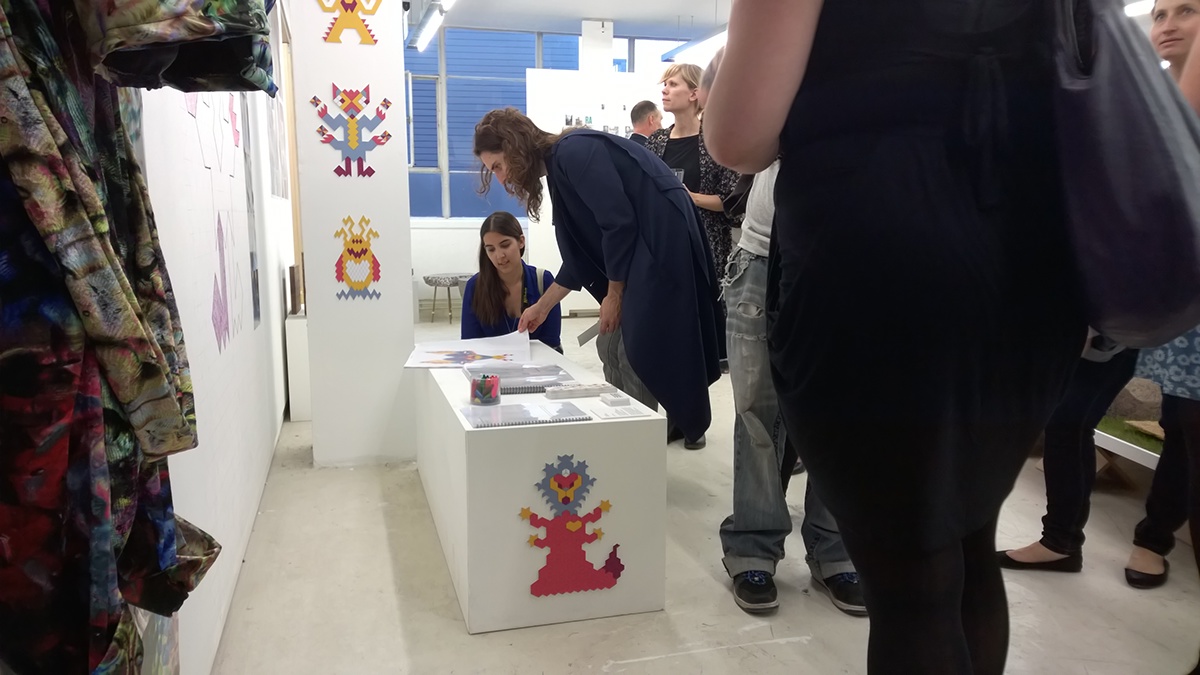CREATures: Play & Learn
Pattern-based Doodle Book
2014

FINAL MA PROJECT
In 2013, I started my masters degree in Graphic Design, at the London Metropolitan University.
This doodle book was my final project.
My Research question
"How can graphic patterns be used as a method of learning, to develop visuospatial and dexterity skills,
on children aged 7 to 11, through imagination and creativity?"
"Executive summary
This project sought to introduce graphic patterns as a learning method through imagination and creativity, on children aged 7 to 11.
Research commenced with Maria Montessori’s pedagogical method, encouraging learning through play, and then engaged in a wider range of literature about early years education and what important concepts and abilities a child is learning about and developing when playing. The flip side of this is teaching through play, so I investigated toys, in history as an evolution and in categories, as to understand better the world of play.
Through play one can develop several cognitive abilities, which prepare one for future learning. Construction toys like blocks and puzzles are used to improve these abilities. An initial idea of introducing pattern to the components of building blocks was abandoned, as it was less feasible and didn’t answer thoroughly to the brief. Research led to the development of a “doodle-book” based on graphic patterns as the best solution to develop visuospatial skills and practise dexterity, while drawing and colouring on different patterned paper.
The final project presents a fully mapped 32-page dummy, with 12 double-spreads that present four different graphic pattern-cells, in 3 different scales: Large, Medium and Small. Each double-spread shows a different illustration for the child to copy or get inspired and create a new one, a “friend”.
This project was informally tested, as part of the development process, with a small selected group of children between the ages of 7 and 11, due to time and ethical limitations."
PROVING IT
The rules that create visual patterns can train your visuo-spatial skills.(...)
Montessori (1988) says, “Play is the work of the child”. Play is an important and crucial learning tool for children; it’s how they get to know the world surrounding them. And since development and learning are two cumulative processes; early experiences make the foundations of most future skills. (...)
Play contributes to the development of cognitive, physical, social and emotional well being of children, by: helping to increase attention span, improving the efficiency of thinking and problem solving (Goldstein, 2012), whilst ‘calibrating’ their muscles improving dexterity, as well. According to play theorist Brian Sutton-Smith, while playing children learn how to learn – there are neurological foundations that are being developed that will contribute to problem solving, language and creativity (Sutton-Smith).(...)
Visuospatial and graphomotor skills (eg, hand-eye coordination) need to be learned during early years to contribute for drawing skills and spatial understanding (Del Giudice, 2000). Spatial skills are very important as they allow us to interpret information about elements in our environment on a daily basis (eg. maps and diagrams) and this ability prepares children for science, technology, and mathematics. (Verdine, 2014: 8) (...)
Being creative through drawing is an early basic form of children’s artistic activity. (...)
Picture books stimulate imagination while giving creativity a reason. “Doodle-books (e.g. Catlow, 2009; Gomi, 2010; Pinder, 2008a, 2008b; Ryan, 2009) are sets of artistic tasks aimed at stimulating imagination and creative thinking. These are directed at preschool and early elementary school children (…) and complement classic colouring books, which develop visual-mobile coordination, exercise memory, and extend the hand and finger movement precision necessary for accurate writing.” (Dziedziewicz, 2013: 87)
All these things considered, I’ve then decided to design a doodle book that is a ‘hybrid’ between construction play and colouring books, as the graphic patterns become the “building blocks” with which you create your drawings. And for that matter had to rethink and change the target audience, to between 7 and 11, considered in the UK National Curriculum as Key Stage 2, where children have already their formal learning. (...)
THE RESULT
Tried several patterns to test the possibilities and limitations of each. The chosen patterns were 4 different triangle-based: the equilateral triangle, the diamond, the axonometric and the tumbling block. Together they create a family, as they all have one common link: the triangle.
The A3 page size was chosen as it is an activity book and the drawings can be cut out of the book and put on the wall.
Different layouts were considered for the book. The first presented each type of triangle-based pattern in Large, Medium and Small before moving along to the next one.
As the Pattern cells become smaller, the drawings are able to become more complex, as the ‘grid’ allows you more freedom. So it was considered more logical that the drawings’ complexity should be gradual throughout the book.
Four different patterns are presented in an intercalated matter, where the cells start big and grow smaller along the book. Every pattern is presented first in Large, then Medium and Small. Along the book, the ‘grid’ gets smaller and you are able to create more intricate and complex imagery.
Each spread of the book presents a new creature, drawn according to the specific pattern base.
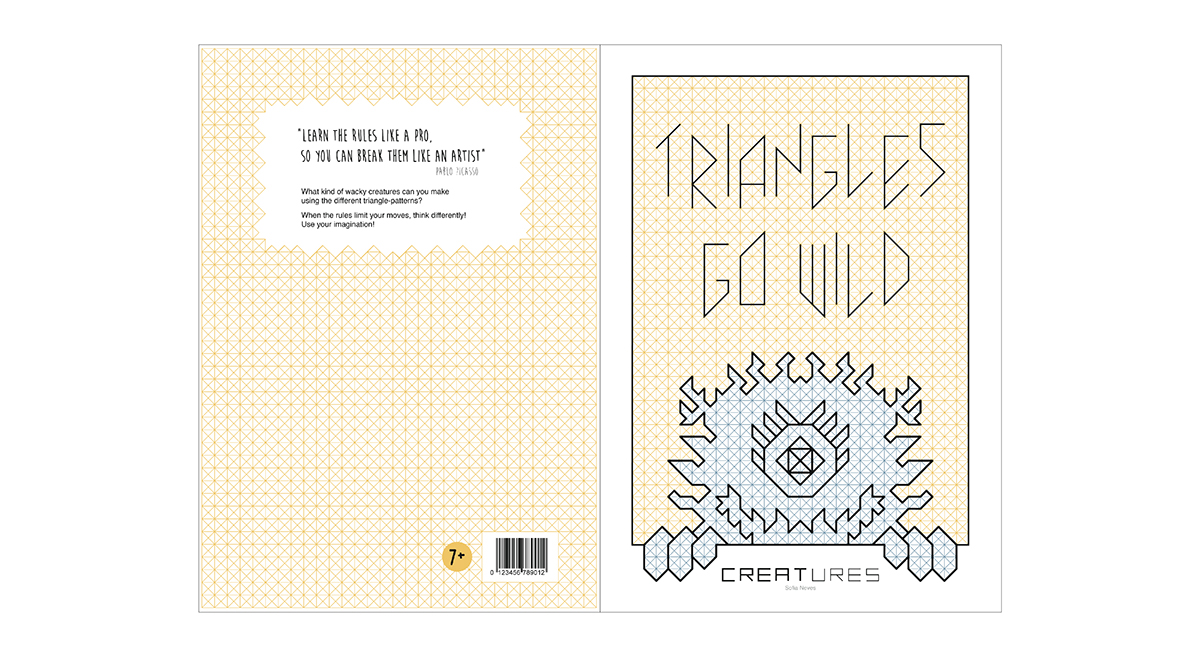
Cover and back cover of the Doodle Book "Triangles Go Wild"
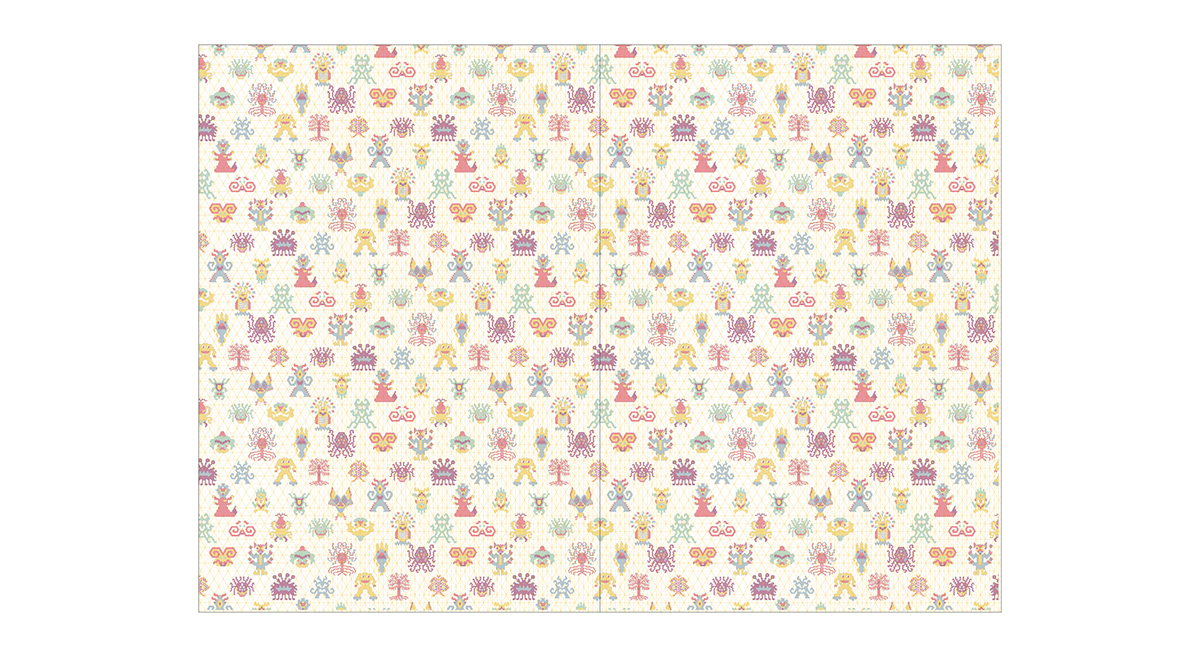
ending pages with an ALL-MONSTERS pattern
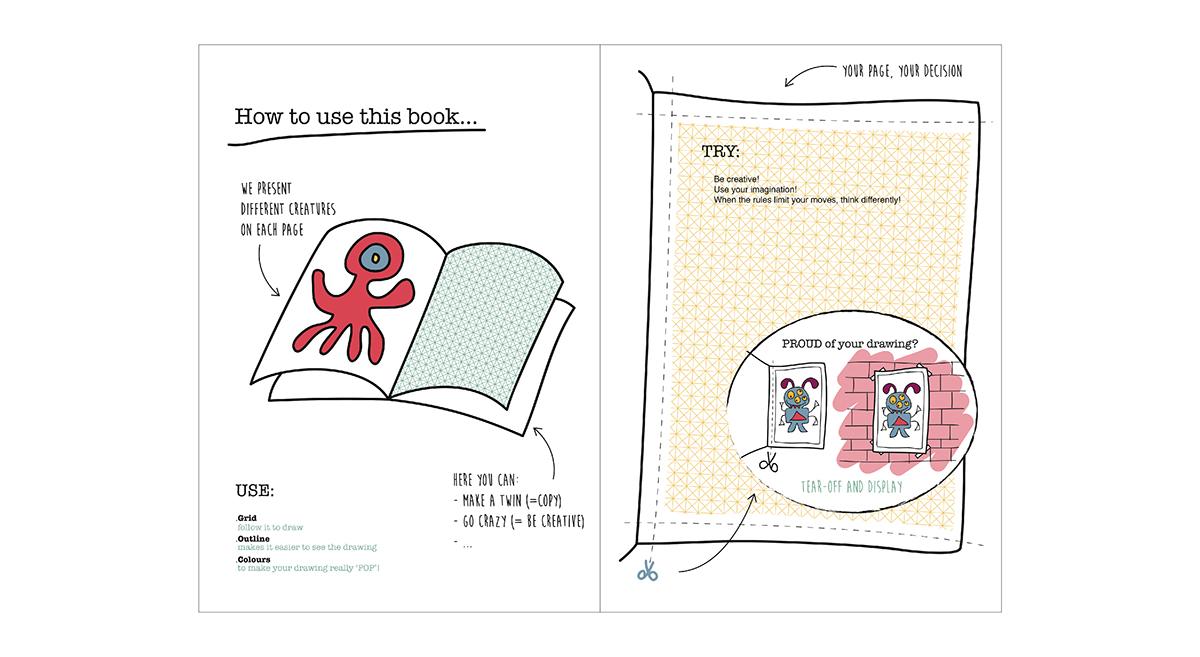
Info pages - instructions on how to use the doodle book
TESTING THE PROTOTYPE
As part of the development process, I informally tested my project, through an alpha-testing, to assess its validity and opportunities to improve. The testing was made with a small group of children, of my targeted age range of 7 to 11 years old. Six subjects were tested, with a ratio of 1:5 of boys and girls. The children were presented with two spreads and were just asked to read and follow the instructions given. The observer was a mere recording spectator.





CONCLUSIONS
Limitations: This project works as a pilot project, as there are ethical limitations and requisites to work with children and the process is quite time-consuming for the given timeframe.
To understand if there was any knowledge acquisition, there should be a pre-test (the first time) and a post-test to compare results, to understand if and what the children have learned.
With further testing with the target audience, conclusions will be drawn on if the format size of the doodle book is too big and should be reconsidered and also the imagery should be tested on its complexity in relation to the age range the book is aiming at.
This project could become a collection of books, based on different pattern cells and/or different themes.
Potentially, this project could also be turned into a 3d product, where you can build the imagery, pull them apart and do again.
THE SHOW
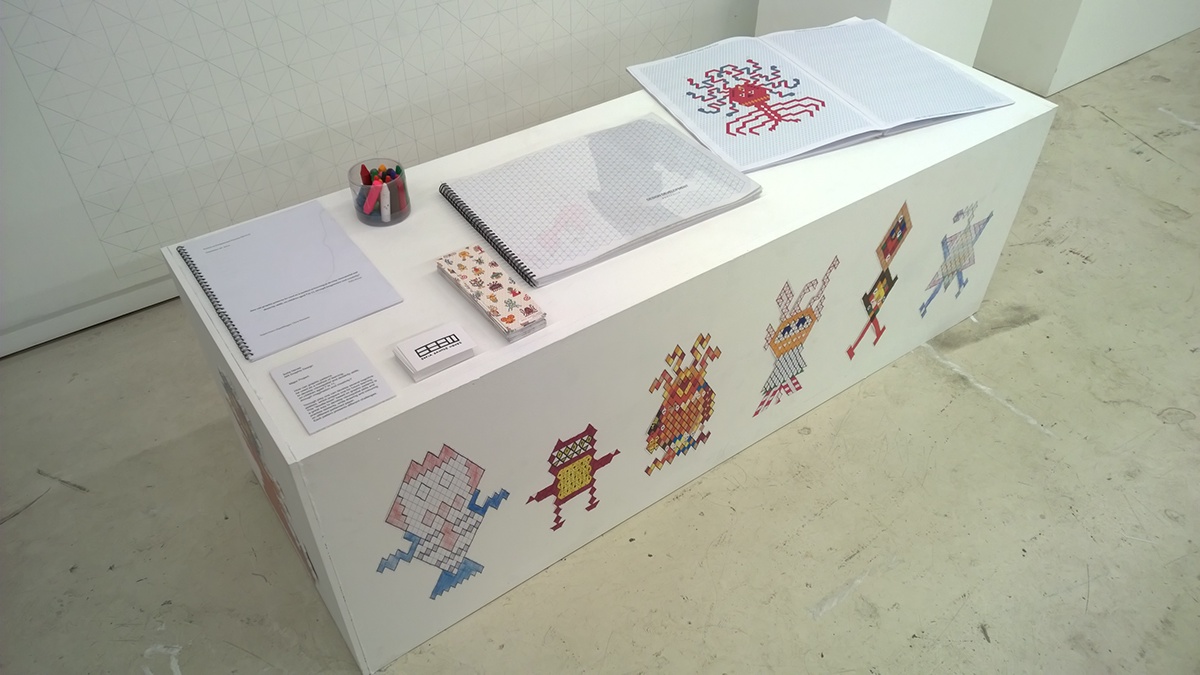
My Stand with my Research Question and results + Pattern study + the pattern-based Doodle Book
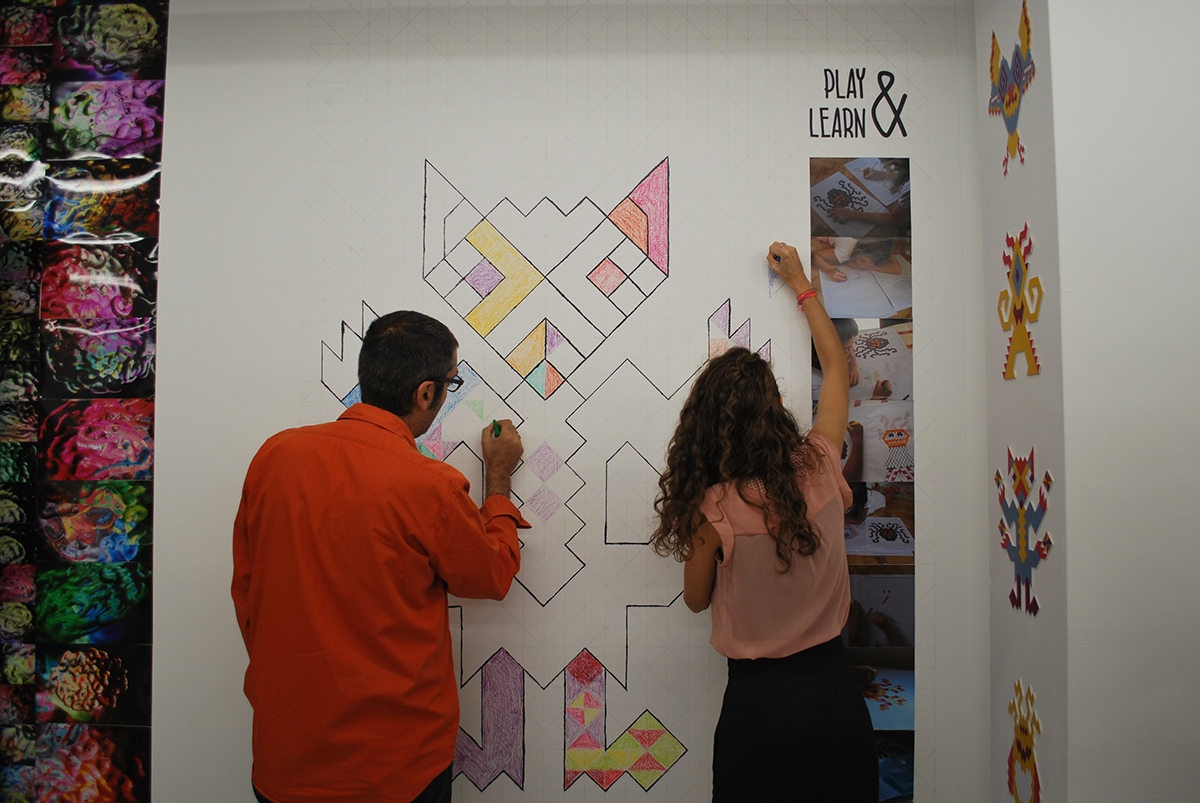
Visitors were encouraged to colour in or drawing something on the pattern on the wall
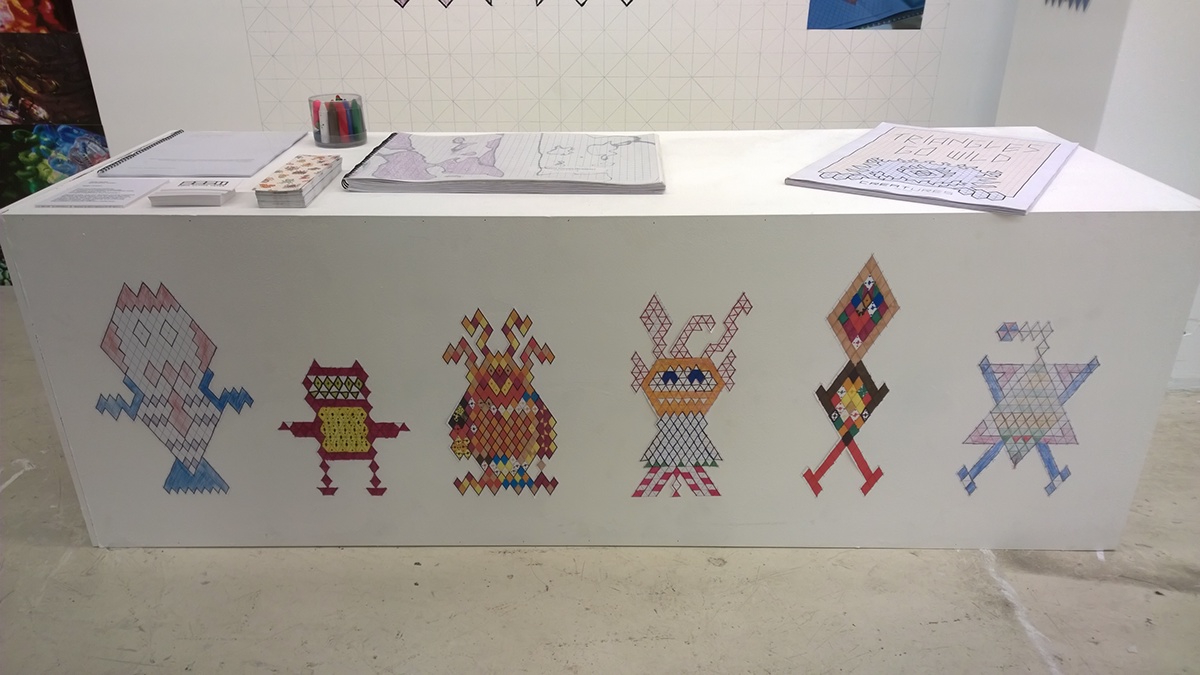
Some of the characters made by the sample group of children
